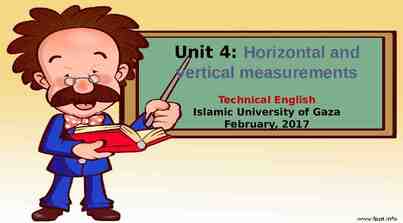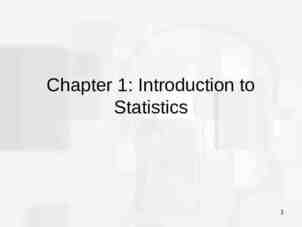Eduqas A Level Music at Blue Coat Mr Hewson
18 Slides3.32 MB

Eduqas A Level Music at Blue Coat Mr Hewson

The Course Component 1: Performance (AS 2.5 minute performance) – 35% or 25% of the A Level, depending on which area in which you specialise. – 35% 12 minute recital at the end of Year 13, visiting examiner – 25% 8 minute recital at the end of Year 13, visiting examiner

The Course Component 2: Composition (AS 2.5 minute composition) – 35% or 25% of the A Level, depending on which area in which you specialise. – 35% Three compositions, one of which must be in a Western Classical style (8-10 minutes combined). – 25% Two compositions, one of which must be in a Western Classical style (4-6 minutes combined).

The Course Component 3: Appraising – 40% of the A Level. – A written exam based on the three chosen Areas of Study.

The Areas of Study Compulsory – Area of Study A: The Western Classical Tradition Choose between: (AS) – Area of Study C: Musical Theatre – Area of Study D: Jazz Choose between: (A level) – Area of Study E: Into the 20th Century – Area of Study F: Into the 21st Century

Area of Study A: The Western Classical Tradition You will study the following two set works: – Symphony No. 104 in D major (‘London’) – Haydn – Symphony No. 4 in A Major (‘Italian’) - Mendelssohn

Area of Study A: The Western Classical Tradition You will demonstrate knowledge and understanding of: – How musical elements are used in the symphony. – The use of instrumentation and development of the orchestra in the period. – Important symphonic composers and landmark works in the period. – How and why symphonies were commissioned during the period. – How the symphony developed through the period. – The programme symphony/symphonic poem. – Reading and writing staff notation. – Chords and chord symbols.

Area of Study A: The Western Classical Tradition Listen to the first movement of Haydn’s ‘London’ symphony, which is from the Classical Period What are the typically Classical features of this movement? How is this a clear example of a Classical symphony?

Classical Traits Classical Orchestra – strings (usually carrying the melody), flutes, oboes, clarinets, bassoons, trumpets, French horns, timpani (larger orchestra than from the Baroque period), less reliant on the harpsichord for ‘filling-in’. Textures were mainly homophonic and melodic with a chordal accompaniment, though still including many examples of contrapuntal writing. Less complex than Baroque music, with a lighter, clearer texture including clarity of phrases and less ornamentation. Tonic & Dominant harmony Perfect (V-I), Imperfect (I-V) cadences Balanced phrases (musical sentences) Larger range of dynamics Emphasised grace (style galante) rather than the grandeur and seriousness of much of Baroque music. The overall style was more varied and flexible, with contrasts evident in the music (dynamics, mood, instrumental sonorities, rhythms and thematic material, tempo and keys)

Analysing the Introduction 104 Highlight any key features of this piece that ‘stick out’ to you. Can you also work out: – – – – – The key? Modulations? Cadences? Key textures Any other features of interest?

Loud ‘fanfare’ motif th (Unison, tutti, ff) – perfect 5th interval Quiet answering phrase, with narrow pitch ranges. Now homophonic BUT continues double-dotted rhythm 104 Sounds ‘sad’(also Bb and C#) D minor Loud ‘fanfare’ motif repeats, this time in F major (a perfect cadence is heard before) Quiet answering phrase returns, but this time ascending upon each repetition An imperfect cadence (I – V) and a pause sets us up for the ‘real’ start Loud ‘fanfare’ motif returns in Dm, but cut short with a pp marking

Area of Study C: Musical Theatre You will study the music of six composers: – Richard Rodgers – Leonard Bernstein – Stephen Sondheim – Claude-Michel Schoenberg – Andrew Lloyd Webber – Stephen Schwartz

Area of Study C: Musical Theatre You will gain an understanding of: – How musical elements are used in musical theatre. – The relationship between lyrics and music. – Music for different types of characters. – Types of song. – The role of the orchestra. – Genres of musical theatre. – The effect of audience, time and place on musical theatre. – The purpose and intention of the composer/performer. – How musical theatre has changed over time.

Activity - Area of Study C: Musical Theatre Listen to the song ‘I’d Give My Life For You’, from Claude-Michel Schoenberg’s Miss Saigon. – Describe the instrumental introduction before the singing starts. – Comment on the vocal writing in the song. – How does the composer use different musical elements to create suspense? – The song describes a mother’s devotion to her young child she risks losing during the Vietnam War. How is the song suitable for this purpose?

Area of Study D: Jazz You will study the following six jazz sub-genres: – Ragtime – Dixieland – Early jazz – Big band – Be-bop – Cool jazz

Area of Study D: Jazz You will gain an understanding of: – How musical elements are used in jazz. – Important composers/performers in the development of each genre. – The role of improvisation. – The effect of audience, time and place on jazz. – The purpose and intention of the composer/performer. – How jazz has changed over time.

Activity - Area of Study D: Jazz Using any software/instrument that you may have at home, compose an improvised melody to be accompanied by the following chord sequence. How can you utilise blue notes and non-harmony notes to make your melody more interesting?

A Level Music at the Blue Coat School Key contacts: Mr Hewson – Head of Music – [email protected] Mrs Roberts – Teacher of Music/Instrumental Music Coordinator – [email protected] Mr Fieldhouse – Musician in Residence/Composition Support – [email protected] Best of luck on GCSE results day! We hope to see you in September. Any questions?






